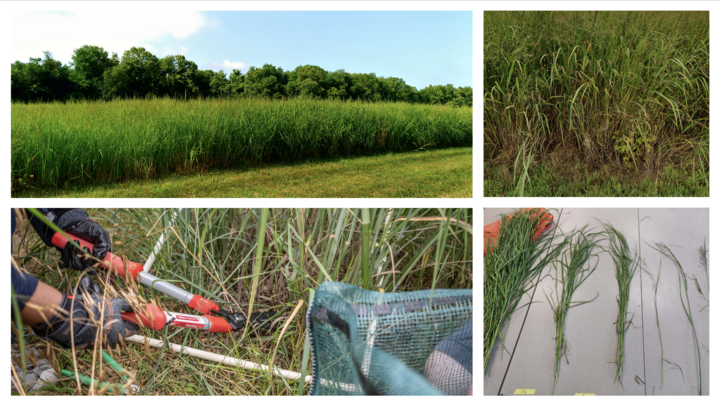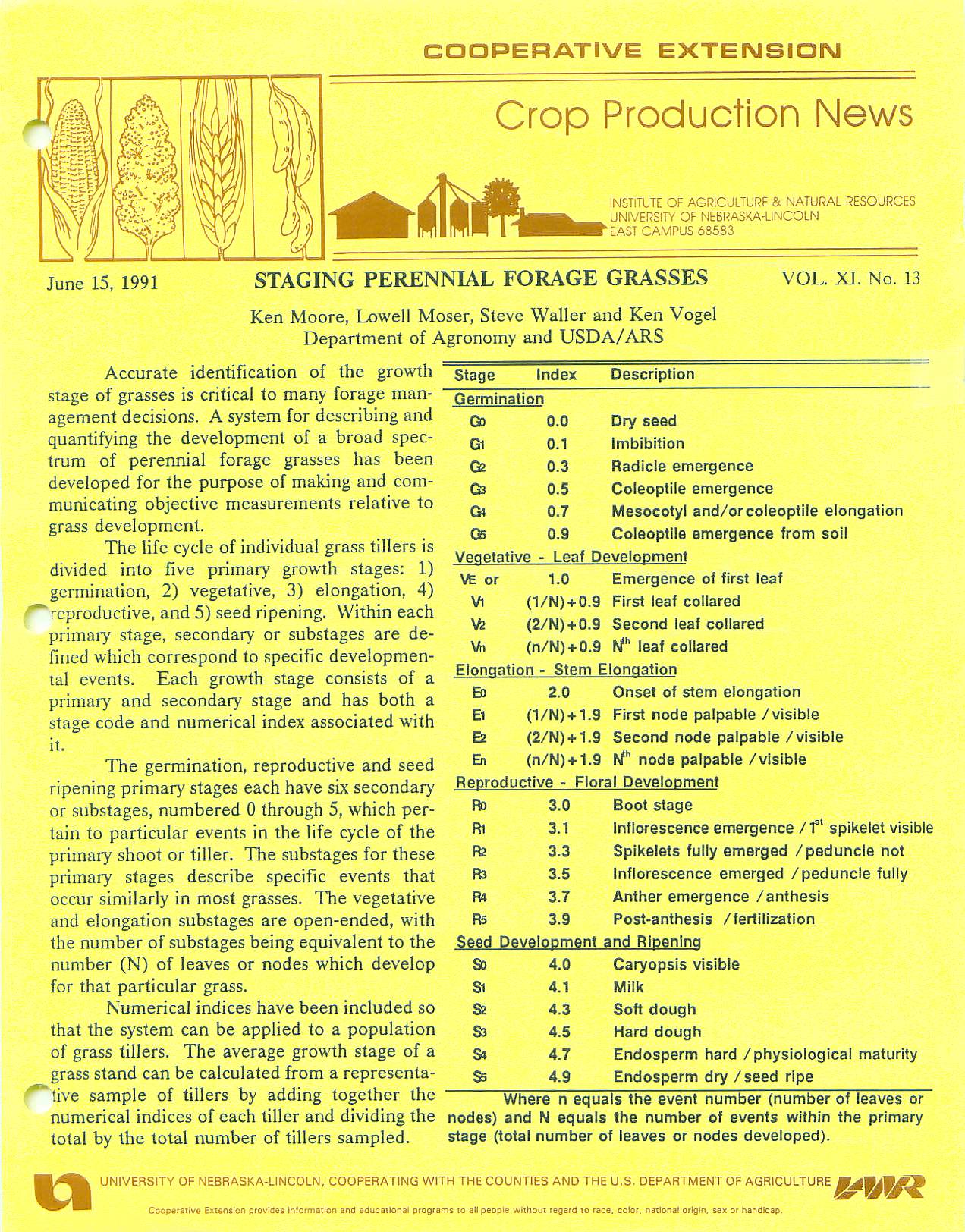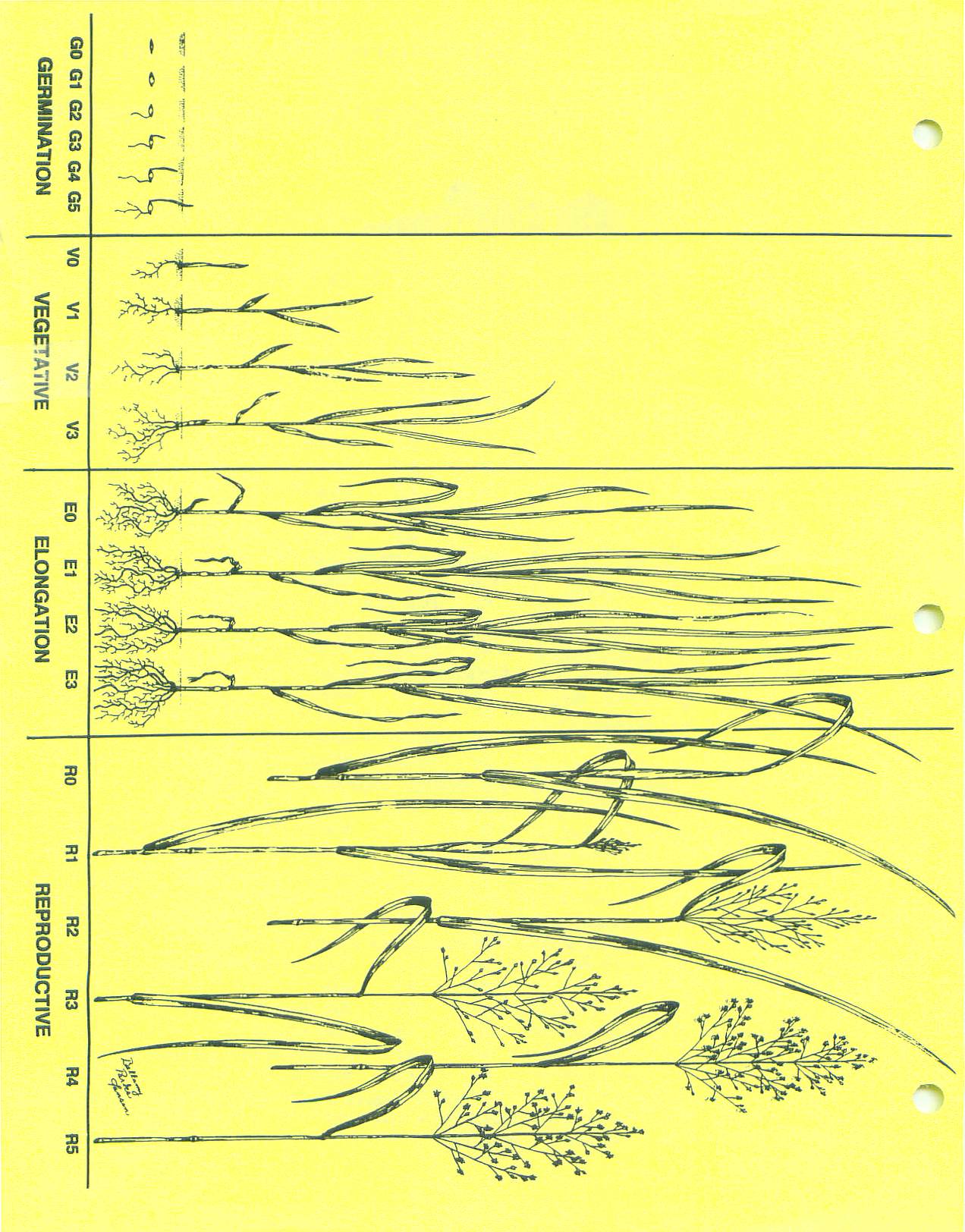 Switchgrass field, sampling, and stage sorting. Photos by Carolina Córdova.
Switchgrass field, sampling, and stage sorting. Photos by Carolina Córdova.
In the domain of biological organisms, the aging structure of grass tillers holds profound implications beyond individual development. The numerical indices assigned to tiller development enable a comprehensive description, with the mean stage count (MSC) of tillers commonly used for developmental comparisons of grass species, cultivars, and swards to any variable that can impact their development. However, focusing solely on averages of grass tillers overlooks vital demographic information with significant consequences for functioning and management.
In a recent publication proceeding from the XXV International Grassland Congress (IGC 2023), Drs. Ken Moore and Carolina Córdova from Iowa State University and University of Lincoln-Nebraska, respectively, reported a groundbreaking research, rooted in Nebraska which explores the use of diversity indices to unveil the variation in tiller populations. Evaluating two key diversity indices, Shannon’s and Simpson the study delves into the growth and development of smooth bromegrass (Bromus inermis Leyss.) and intermediate wheatgrass (Thinopyrum intermedium(Host) Barkworth & D.R. Dewey), providing unique insights into their distinct characteristics. A project built upon the foundational work of the Nebraska System for describing grass growth stages (Figure 1), which was developed at UNL in the early 1990s, has long been the standard for quantifying growth stages of perennial forage grasses. This system divides the life cycle of individual grass tillers into five primary growth stages: germination, vegetation, elongation, reproductive, and seed ripening. Each stage is further broken down into substages, allowing for precise description of grass development.


Figure 1. Staging Perennial Forage Grasses, published by Moore et al. (1991).
The study’s objective was to employ diversity indices to describe the demographic structure of grass tiller populations. Shannon’s and Simpson’s indices were applied to data from a replicated study conducted at the Eastern Nebraska Research, Extension, and Education Center part of UNL between 1990 and 1991. This study yielded repeatable insights into the distribution of growth stages, effectively distinguishing between species and sampling dates. Also, it builds on the previous research study conducted by Moore et al., (1991) at ENREEC.
The study reveals that “grass tillers, despite sharing the same crown, each follow their own path, hitting various stages of maturity along the way asynchronously. Genetic differences in tiller development among different grass types often exist, complicating the characterization of grass development”. Using a metaphor to understand this, we can imagine reading a book in which each character (i.e., grass tiller) has their own language – complicated but fascinating. The authors stress the need to understand these genetic quirks to truly grasp the intricate dance of grass tillers and how important is to use these diversity indices to understand grass tiller population dynamics.
The findings hold implications for forage improvement, sward persistence, and bioenergy feedstock selection. Tiller maturation impacts nutritional value, with potential benefits in delaying maturity or reducing elongated tillers. For bioenergy, a more homogeneous tiller maturation promises feedstocks with ideal carbon-to-nitrogen ratios. Understanding and selecting for determinate tiller development is crucial in the quest to develop perennial grain crops. The study proposes diversity indices as a practical criterion for assessing and selecting this trait, marking a significant stride towards harnessing Nature’s Algorithm for sustainable agriculture.
This study builds upon the Nebraska System by providing a more nuanced understanding of tiller population dynamics. While the original system offers a method for describing individual tiller growth stages, this new research demonstrates how to extract additional information about the entire sward using diversity indices. The combination of both offers researchers and producers a powerful tool for understanding and managing perennial forage grasses.
For media inquiries, please contact: Ken Moore ([email protected], Iowa State University), or Caro Córdova ([email protected], Univ. of Nebraska-Lincoln).
Acknowledgements: The data used in this study were from a research trial supported by USDA-ARS, Northern Great Plains Forage and Range Unit, Lincoln, NE.
More information about this research paper is available at https://www.proceedings.com/071171-0050.html
References:
Moore, K. J., L. E. Moser, S.S. Waller, K. P. Vogel, B. E. Johnson, and J. F. Pedersen. 1991. Describing and quantifying growth stages of perennial forage grasses. Agron J 83:1073-1077.
Moore, K. J., L. E. Moser, S.S. Waller, and K. P. Vogel, 1991. Staging Perennial Forage Grasses. IANR-UNL. Cooperative Extension, Crop Production News, Vol. XI, No. 13.
-University of Nebraska-Lincoln